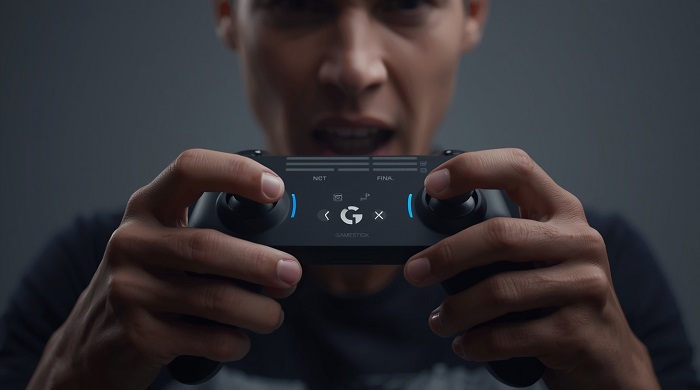When it comes to budget-friendly gaming devices, the HSS GameStick has become a popular choice among retro gaming fans and casual players alike. This portable plug-and-play console allows users to enjoy thousands of classic titles directly on their television without the need for a bulky system. While the device comes pre-configured and ready to play, many players want to explore deeper and make the most of its manual settings. Adjusting these options can unlock smoother gameplay, enhance graphics, improve controller performance, and even extend the life of the stick itself. In this article, we will take a deep dive into the manual settings of the HSS GameStick explaining how to configure it properly, what each option does, and how you can customize your experience to suit your style.
Understanding the HSS GameStick
Before getting into the manual settings, it is important to understand what the HSS GameStick actually is. Essentially, it is a small HDMI stick console that connects directly to your TV or monitor. It usually comes bundled with one or two wireless controllers and includes a library of retro games spanning different consoles such as NES, SNES, Sega Genesis, PlayStation 1, and more. Since the hardware is compact, the device relies heavily on emulation software to run the games.
The device has a basic interface, usually menu-driven, allowing players to select games, save progress, and sometimes connect to Wi-Fi for additional content. But for advanced users, the manual settings menu becomes the heart of customization. This is where players can fine-tune performance, controller mapping, resolution, and even install new games.

Why Manual Settings Matter
Most players simply plug in the GameStick and start playing, which is perfectly fine. However, serious gamers who want the best performance and experience know that the manual settings open up a whole new level of control. For example:
- You can fix input lag by adjusting video synchronization.
- You can map controller buttons for better comfort.
- You can change video resolution depending on your TV.
- You can enable save states and autosaves.
- You can install additional emulators or ROMs.
- You can adjust sound settings for clearer output.
In other words, the manual settings allow you to transform the HSS GameStick from a plug-and-play device into a personalized gaming hub.
Accessing the Manual Settings on HSS GameStick
To access the settings menu, follow these steps:
- Connect the HSS GameStick to your TV through HDMI.
- Power it on and wait for the main menu to load.
- Using the controller, navigate to the Settings or System Setup option.
- Depending on your model, you may see categories like Display, Audio, Controller, Network, and Advanced Options.
Some versions of the GameStick may require pressing a specific button combination to enter advanced or hidden menus. Always check the manual included with your stick, or search the exact model online, since HSS often rebrands different versions of the stick.
Manual Display Settings
One of the most important categories in the manual settings is Display. Since the GameStick connects to TVs of all sizes, the right display setup ensures that games look sharp and run smoothly.
- Resolution Settings – Most sticks allow switching between 720p and 1080p. Some modern TVs upscale content better, so experiment with both.
- Aspect Ratio – Classic games were designed for 4:3 displays. By default, the stick may stretch games to 16:9. If you prefer authentic visuals, change to 4:3.
- Frame Rate – Some versions allow you to set frame synchronization, which can reduce screen tearing but may add slight input lag.
- Shaders and Filters – Retro gamers often enable scanline filters to make games look like they did on CRT televisions. This can be toggled in the display settings.
Properly adjusting these options can make even older titles look crisp and nostalgic.
Manual Controller Settings
The GameStick usually comes with wireless controllers, but sometimes they need fine-tuning.
- Button Mapping – Different emulators assign buttons differently. You can remap keys so that they match your comfort, especially if you grew up playing on a specific console.
- Controller Sensitivity – For games like fighting titles or racing, you may want to adjust how sensitive the directional pad or analog stick feels.
- Player Assignments – If two controllers are connected, you can manually assign Player 1 and Player 2 to avoid confusion during multiplayer sessions.
- Third-Party Controllers – Some sticks allow connecting wired USB or Bluetooth controllers. Manual settings help configure them properly.
By customizing these options, you ensure that gameplay feels natural and enjoyable.
Audio Settings
Sound plays a big role in retro gaming nostalgia. Fortunately, the HSS GameStick includes audio settings for customization.
- Volume Control – Adjust system volume if your TV lacks easy access.
- Surround vs Stereo – Most classic games are designed in stereo, but some sticks allow simulated surround sound.
- Audio Sync – In some cases, sound may lag behind gameplay. Adjusting audio synchronization can fix this issue.
- Mute Options – Useful when playing late at night without disturbing others.
These settings help deliver the right balance between crisp game audio and comfortable listening levels.
Network and Wi-Fi Settings
Not all GameStick models support Wi-Fi, but those that do allow for expanded functionality.
- Wi-Fi Setup – Connect to your home internet to download updates or additional ROMs.
- Online Play – Some advanced versions support online multiplayer via retro gaming communities.
- Cloud Saves – Certain firmware versions allow you to save your progress online.
- ROM Transfers – If you want to add more games, network settings let you transfer files wirelessly from a PC.
Network settings open the door to upgrading your stick and expanding the game library beyond the pre-installed collection.
Advanced Settings and Customization
For experienced users, advanced manual settings are where the real power lies.
- BIOS File Management – Some emulators require BIOS files to run properly. You can install them here.
- ROM Paths – Organize and select where the system looks for games.
- Save State Settings – Decide how many save slots are available and whether auto-save is enabled.
- Performance Tweaks – Options such as overclocking (if supported) can increase performance but may heat up the device.
- Firmware Updates – Updating the firmware can improve stability and add new features.
These options are best handled by advanced users, but they dramatically increase what your HSS GameStick can do.
Common Problems with Manual Settings and Fixes
Even though manual settings give more control, they can sometimes create problems. Here are some common issues and solutions:
- Game Not Displaying Correctly – Switch between 720p and 1080p or change aspect ratio.
- Controller Not Responding – Re-pair the controller or remap buttons.
- Audio Delay – Adjust audio sync in settings.
- Games Running Slow – Disable filters, lower resolution, or update firmware.
- Wi-Fi Not Connecting – Ensure you are using the correct password and that your model supports Wi-Fi.
By carefully navigating these settings, you can troubleshoot most problems without technical help.
How Manual Settings Improve Gameplay
Tweaking the HSS GameStick’s settings may sound unnecessary, but in practice, it makes a huge difference. For example, turning off unnecessary filters can improve performance in demanding PlayStation 1 games. Mapping buttons to mimic original consoles makes gameplay more natural. Adjusting video resolution ensures that games display properly on modern flat-screen TVs. All these small adjustments combine to create a smoother, more immersive gaming experience.
Tips for Safe Customization
Since not every setting is risk-free, here are some tips for safe manual customization:
- Always note default settings before making changes.
- Avoid overclocking unless you know what you are doing.
- Use official firmware updates to prevent device corruption.
- Keep a backup of ROMs and save files before experimenting.
- Only download BIOS files and ROMs from trusted sources.
This way, you can enjoy all the benefits of customization without damaging your device.
The Future of HSS GameStick and Manual Settings
As retro gaming continues to grow in popularity, devices like the HSS GameStick are likely to evolve. Future versions may include more powerful chips, better Wi-Fi capabilities, and improved settings menus with easier navigation. Manual settings will remain important because players always want the ability to personalize their gaming experience. Whether it is changing button layouts, adjusting graphics, or installing new emulators, customization is what makes these devices special.
Conclusion
The manual settings on the HSS GameStick are not just an extra feature – they are the key to unlocking the full potential of this little retro gaming powerhouse. By learning how to adjust display options, remap controllers, configure audio, and manage advanced settings, you can create a smoother, more authentic, and more enjoyable gaming experience. For casual players, the default settings work fine, but for enthusiasts who crave a tailored setup, the manual settings menu is where the real magic happens.
With careful adjustments, the HSS GameStick can go from a simple plug-and-play gadget to a customized retro console that rivals far more expensive setups. Whether you want sharper graphics, smoother performance, or just the nostalgic look of CRT scanlines, the settings menu makes it all possible.
FAQs About Manual Settings HSS GameStick
Can I reset the GameStick if I mess up manual settings?
Yes, most models include a factory reset option in the settings menu.
Can I add new games to my GameStick?
Yes, if your model supports it. You can transfer ROMs via USB or Wi-Fi.
Do manual settings improve performance?
Yes, especially when you adjust display resolution, controller mapping, and disable unnecessary filters.
Can I connect other controllers to my GameStick?
In many cases, yes. Some models support USB and Bluetooth controllers.
Is changing settings risky?
Not usually. Just make sure you remember the defaults so you can restore them if needed.



